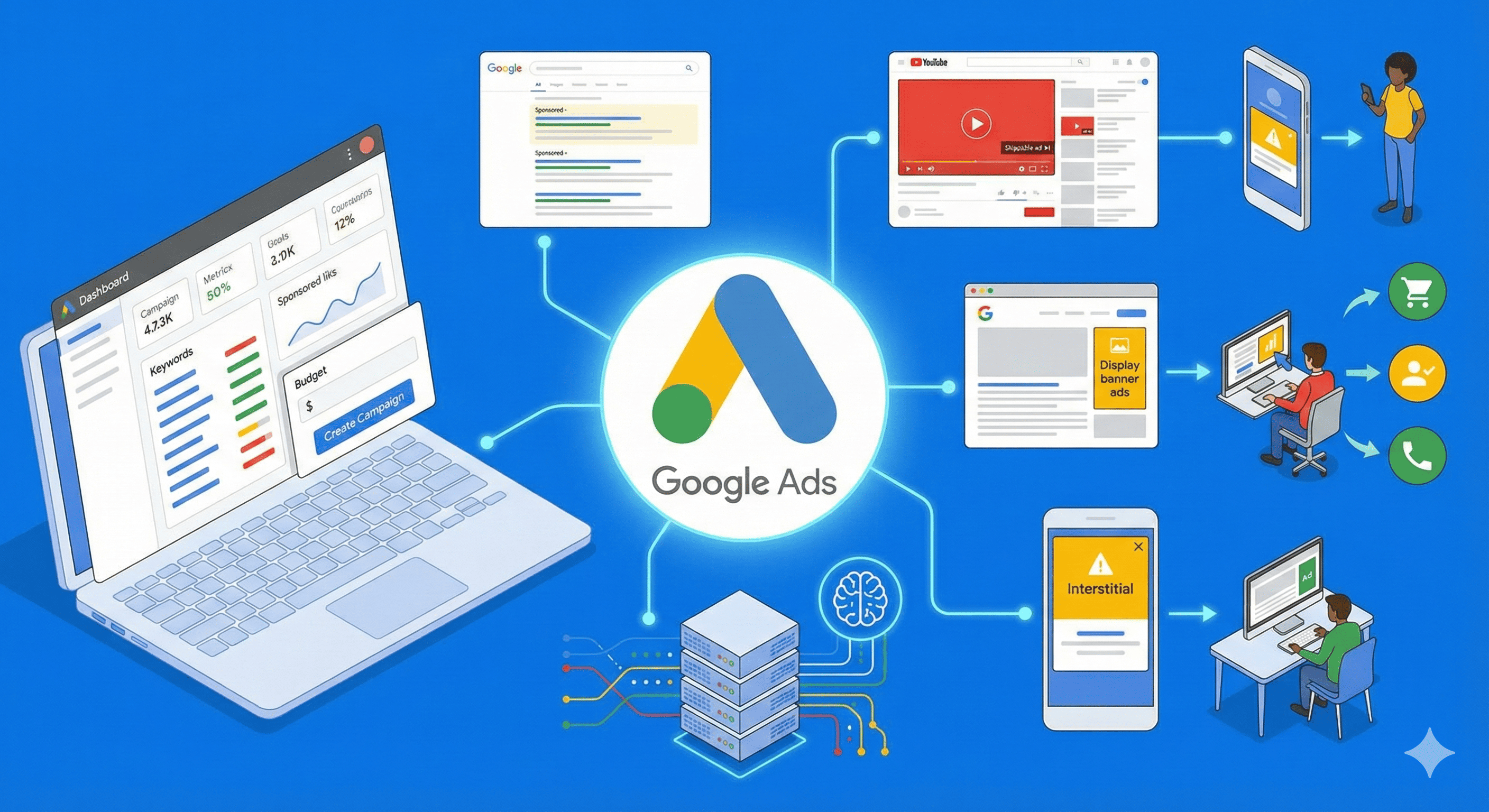
In Australia's progressively competitive digital landscape, small business owners face unique challenges in establishing and maintaining their online presence. With 87% of Australian consumers researching products and services online before making a purchase decision, effective SEO has become more than just advantageous; it's essential for business survival and expansion.
Understanding the Australian SEO Landscape
Before diving into tactical recommendations, it's crucial to understand what makes the Australian SEO environment distinct. Local search dominates the Australian market, with 93% of Australian online experiences beginning with a search engine and Google maintaining an overwhelming 94% market share in Australia.
The mobile-first reality cannot be ignored, as mobile searches account for 65% of all Australian web traffic, with smartphone penetration exceeding 91% of the adult population. Australia's vast geography and concentrated population centres create distinct search patterns, with nearly 90% of searches including location modifiers in major cities.
Australian businesses must also navigate specific regulations, including the Privacy Act and Australian Consumer Law, which influence content and data collection practices. Understanding these factors forms the foundation for any successful SEO strategy targeting Australian consumers.
.jpg)
Technical SEO Foundations
Technical SEO creates the infrastructure necessary for search engines to effectively crawl, index, and rank your website. For Australian small businesses, establishing strong technical foundations is particularly important as it directly impacts user experience and search visibility.
Website Speed Optimisation
Website speed remains one of the most critical factors for both user experience and search rankings. Research by Deloitte Australia found that improving page speed by just one second can increase conversions by 17%, making this a critical priority for small businesses.
To optimise website speed effectively, implement Australian CDN solutions that utilise content delivery networks with Australian nodes to improve loading speeds for local users. Optimise all images by compressing them without quality loss using tools like TinyPNG or ShortPixel, and enable browser caching by setting appropriate cache times for static resources. Additionally, minimise your code by reducing unnecessary CSS, JavaScript, and HTML to improve loading times across all devices.
Mobile Responsiveness and Performance
Given that mobile searches dominate Australian web traffic, implementing responsive design ensures your website functions seamlessly across all device types. Test your website across multiple devices to verify performance on various screen sizes and operating systems common in Australia. Consider enabling AMP (Accelerated Mobile Pages) for content-heavy sites to improve mobile experience, and optimise touch elements by ensuring buttons and navigation elements are appropriately sized for mobile users.
Technical Structure and Compliance
Implementing a logical site architecture involves organising content in a hierarchical structure with clear categories relevant to Australian users. Create and submit your XML sitemap to Google Search Console and Bing Webmaster Tools, whilst optimising your robots.txt file to ensure search engines can access important pages while excluding irrelevant content.
Set canonical tags to prevent duplicate content issues by specifying preferred URLs, and implement schema markup, particularly LocalBusiness schema with Australian business identifiers like ABN. Security and compliance form the backbone of trustworthy websites, so install an SSL certificate to ensure your website uses HTTPS to protect user data and improve search rankings.
According to the Australian Competition and Consumer Commission, maintaining proper security measures is not just good for SEO but also necessary for regulatory compliance. Create a comprehensive privacy policy compliant with Australian Privacy Principles and set up regular security scans to protect against malware and security vulnerabilities that could impact rankings.

On-Page SEO Elements
On-page SEO focuses on optimising individual pages to rank higher and earn more relevant traffic. For Australian businesses, these elements should be tailored to local market needs and consumer behaviour patterns.
Keyword Research and Implementation
Effective keyword research begins with understanding Australia-specific search terms and phrases commonly used by Australian consumers, which often differ significantly from international terminology. Target location-based keywords by incorporating city, suburb, and state terms relevant to your service areas, whilst analysing competitor keywords to identify terms driving traffic to competing Australian businesses.
Balance your keyword strategy between commercial and informational keywords, targeting both transaction-oriented and information-seeking search queries. This approach ensures you capture users at different stages of their customer journey, from initial research to final purchase decisions.
Content Optimisation and User Experience
Create unique meta titles and descriptions that include primary keywords and location modifiers where relevant. Optimise your heading structure using H1-H6 tags logically whilst incorporating target keywords naturally throughout your content. Develop comprehensive content that creates in-depth resources thoroughly addressing Australian customer questions and needs.
Incorporate Australian English throughout your content, using spelling and terminology appropriate for Australian audiences, such as "enquire" rather than "inquire" and "colour" instead of "color". Optimise images with descriptive filenames and alt text that includes relevant keywords whilst maintaining accessibility standards.
Structure content for reader engagement by using clear subheadings, appropriate paragraph lengths, and logical flow that guides users through information effectively. Implement strategic internal linking to connect related content, improving navigation and distributing page authority throughout your site. Include relevant calls to action that guide users toward business objectives with clear, compelling messaging, and display Australian business credentials, certifications, and trust symbols to build credibility.
Local SEO for Australian Markets
For small businesses serving specific Australian locations, local SEO represents one of the highest-ROI marketing channels available, offering direct connection with customers actively searching for local products and services.

Google Business Profile Optimisation
Begin by claiming and verifying your Google Business Profile listing through the complete verification process. Provide comprehensive information including accurate business name, address, phone number, website URL, and business hours. Select appropriate primary and secondary categories that best represent your business within Google's category system.
Add high-quality images by uploading professional photos of your business, products, and services that showcase your offerings effectively. Implement a strategy for generating positive reviews whilst responding professionally to all customer feedback, as this demonstrates active engagement and builds trust with potential customers. Post regular updates sharing promotions, events, and news to increase engagement and maintain an active business presence.
Local Citation Building and Consistency
Submit your business to Australian directories including True Local, Yellow Pages Australia, Hotfrog, and White Pages to establish local authority. Maintain NAP (Name, Address, Phone) consistency by ensuring your business information is identical across all platforms, as inconsistencies can confuse search engines and potential customers.
Target industry-specific directories by registering with relevant Australian association directories and industry platforms that serve your particular business sector. Create listings with local councils and government directories, as many Australian local councils maintain business directories that provide valuable local citations and community visibility.
Localised Content Strategy
Develop dedicated location pages for each service area with unique, valuable content that addresses specific local needs and characteristics. Produce local resources such as guides and content addressing location-specific challenges and opportunities that demonstrate deep understanding of local markets.
Cover local events and news to demonstrate community involvement and maintain relevance within your target locations. Incorporate local testimonials and case studies from customers in your target areas, as these provide social proof and help establish local credibility. Research by Sensis indicates that 64% of Australian consumers will choose a local business found in search results over one without a strong local presence, highlighting the critical importance of these localisation strategies.
Off-Page SEO and Authority Building
Off-page SEO factors significantly influence how search engines perceive your website's authority and relevance within your industry and geographic market.

Strategic Link Building
Develop partnerships with local businesses to create mutually beneficial relationships that may naturally lead to backlinks and referrals. Join Australian business associations, as membership often includes directory listings and valuable backlink opportunities whilst establishing industry credibility.
Create genuinely link-worthy content by developing comprehensive resources, conducting original research, or building tools that provide significant value to your industry. Engage with local media by building relationships with journalists and bloggers covering your industry in Australia, positioning yourself as a local expert resource.
Consider guest posting on relevant Australian sites by contributing expert content to established platforms in your niche, ensuring the content provides genuine value rather than serving purely promotional purposes.
Building Brand Presence and Social Signals
Maintain active social profiles focusing on platforms most relevant to Australian consumers in your specific industry. Share and promote your content through social channels to increase visibility and encourage engagement with your brand.
Engage authentically with online communities by participating in relevant discussions and responding thoughtfully to comments and enquiries. Implement social sharing tools that make it easy for visitors to share your content, amplifying your reach through user-generated distribution.
Reputation Management
Monitor brand mentions by tracking references to your business across the web using tools like Google Alerts or Mention to stay informed about your online reputation. Respond professionally to reviews, addressing both positive and negative feedback across all platforms in a manner that demonstrates commitment to customer satisfaction.
Showcase customer testimonials prominently on your website, featuring success stories that build trust with potential customers. Develop crisis management protocols by preparing response strategies for potential reputation issues, ensuring you can respond quickly and appropriately to any challenges that arise.
Measurement and Continuous Improvement
Effective SEO requires ongoing measurement, analysis, and refinement based on performance data and changing market conditions.

Analytics and Performance Monitoring
Install Google Analytics 4 with proper tracking configuration to monitor comprehensive website performance. Configure Google Search Console to connect your website for monitoring search performance and identifying technical issues that may impact visibility.
Set up conversion tracking by defining and monitoring key business actions on your website, such as contact form submissions, phone calls, or online purchases. Create custom dashboards focused on your most important metrics to streamline regular performance analysis.
Track keyword rankings consistently, monitoring position changes for target keywords with particular attention to those with local intent. Analyse organic traffic trends by reviewing traffic patterns across landing pages, device types, and geographical locations to understand user behaviour patterns.
Evaluate user behaviour metrics including bounce rate, time on page, and pages per session to assess content effectiveness and user experience quality. Monitor conversion rates to track how effectively your organic traffic converts to leads or sales, identifying opportunities for improvement throughout the customer journey.
Iterative Improvement Process
Conduct regular SEO audits quarterly to perform comprehensive technical reviews that identify new issues or opportunities for enhancement. Update existing content regularly by refreshing older material with new information, examples, and keyword optimisation based on current search trends.
Implement A/B testing for key elements by experimenting with different titles, meta descriptions, and content formats to optimise performance continuously. Stay current with algorithm updates by adjusting strategies based on changes to search engine algorithms and industry best practices.
Implementation Timeline for Australian Small Businesses

For resource-constrained small businesses, implementing all recommendations simultaneously may prove challenging. A phased approach ensures sustainable progress whilst managing available resources effectively.
During the first month, focus on establishing technical foundations by setting up proper analytics tracking and fixing critical technical issues including mobile responsiveness, site speed, and security implementations. Claim and optimise your Google Business Profile whilst conducting initial keyword research to understand your market opportunities.
The second month should concentrate on on-page optimisation, including optimising meta titles and descriptions for key pages and improving content quality on highest-priority pages. Implement basic schema markup and begin building local citations to establish local search presence.
In the third month, shift focus to content development by creating location-specific service pages and developing comprehensive resources that address customer questions effectively. Implement your internal linking strategy and begin outreach for local partnerships that can support your authority building efforts.
Months four through six should emphasise authority building and strategy refinement. Develop and execute your link building strategy whilst expanding content to target additional relevant keywords. Implement your review generation system and analyse performance data to adjust your strategy based on actual results and market response.
SEO as a Competitive Advantage
For Australian small businesses, effective SEO implementation represents more than just technical compliance—it's a strategic business investment that yields compounding returns over time. By methodically addressing each element of this comprehensive approach, entrepreneurs can build sustainable organic visibility that drives qualified traffic, leads, and sales.
Unlike paid advertising that stops delivering the moment you cease payment, SEO creates lasting digital assets that continue generating value long after initial implementation. As you implement these strategies, remember that SEO functions as an ongoing process of optimisation, measurement, and refinement rather than a one-time project with finite completion.
By committing to this process and focusing on the unique needs of Australian consumers, small business owners can establish a competitive advantage that larger competitors with less localised approaches will struggle to match. Begin with the highest-impact elements for your specific business context, measure results diligently, and continuously improve your approach based on performance data and market feedback.
With persistence and strategic execution, your small business can achieve and maintain prominent visibility in the searches that matter most to your customers, building a foundation for sustainable growth in the Australian digital marketplace.
Ready to Turn Your Checklist Into Results?
An SEO checklist is a start — but what counts is execution. Let Maven Marketing guide you step-by-step toward growth and visibility.
See how Maven Marketing can power up your SEO









